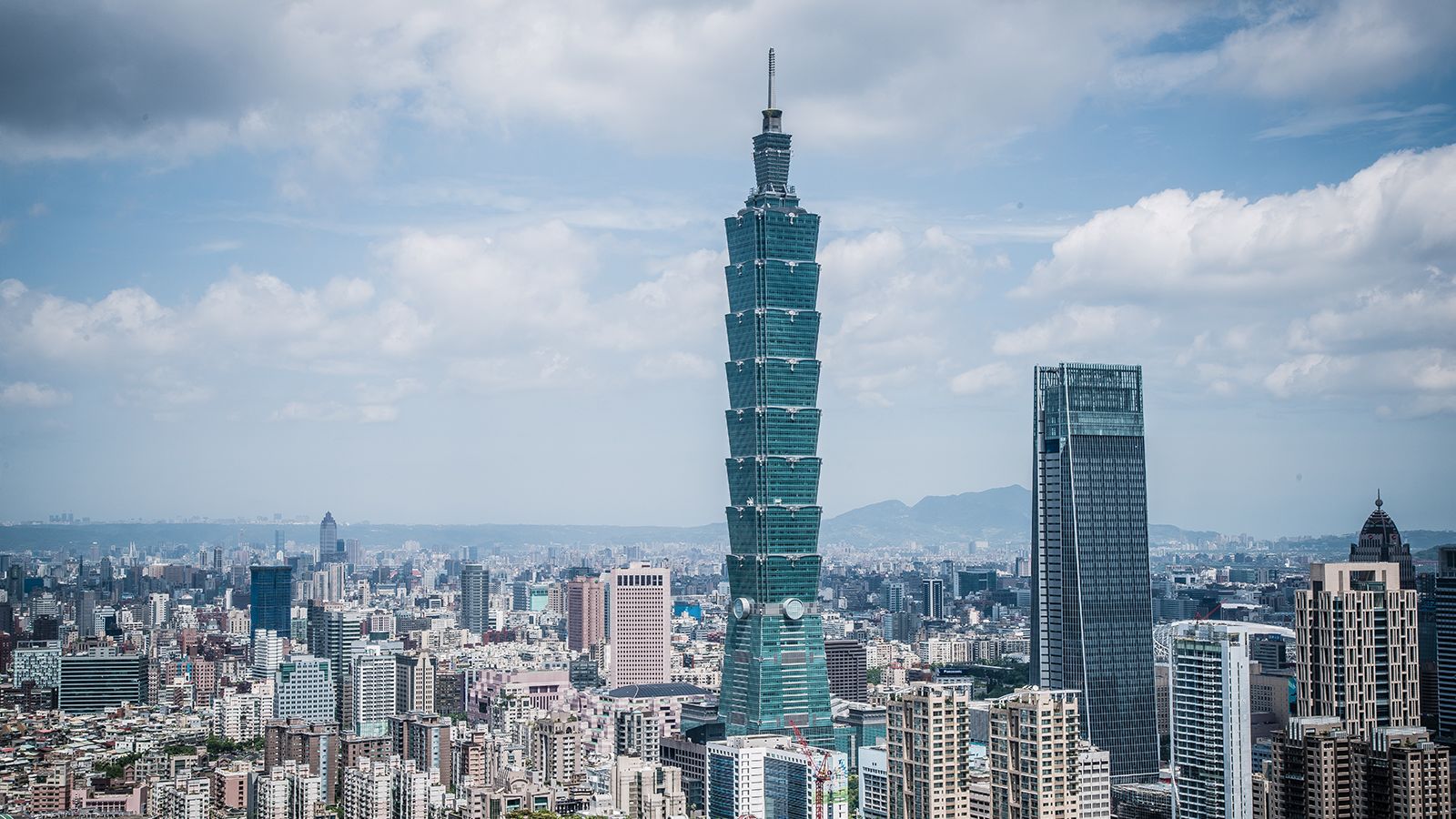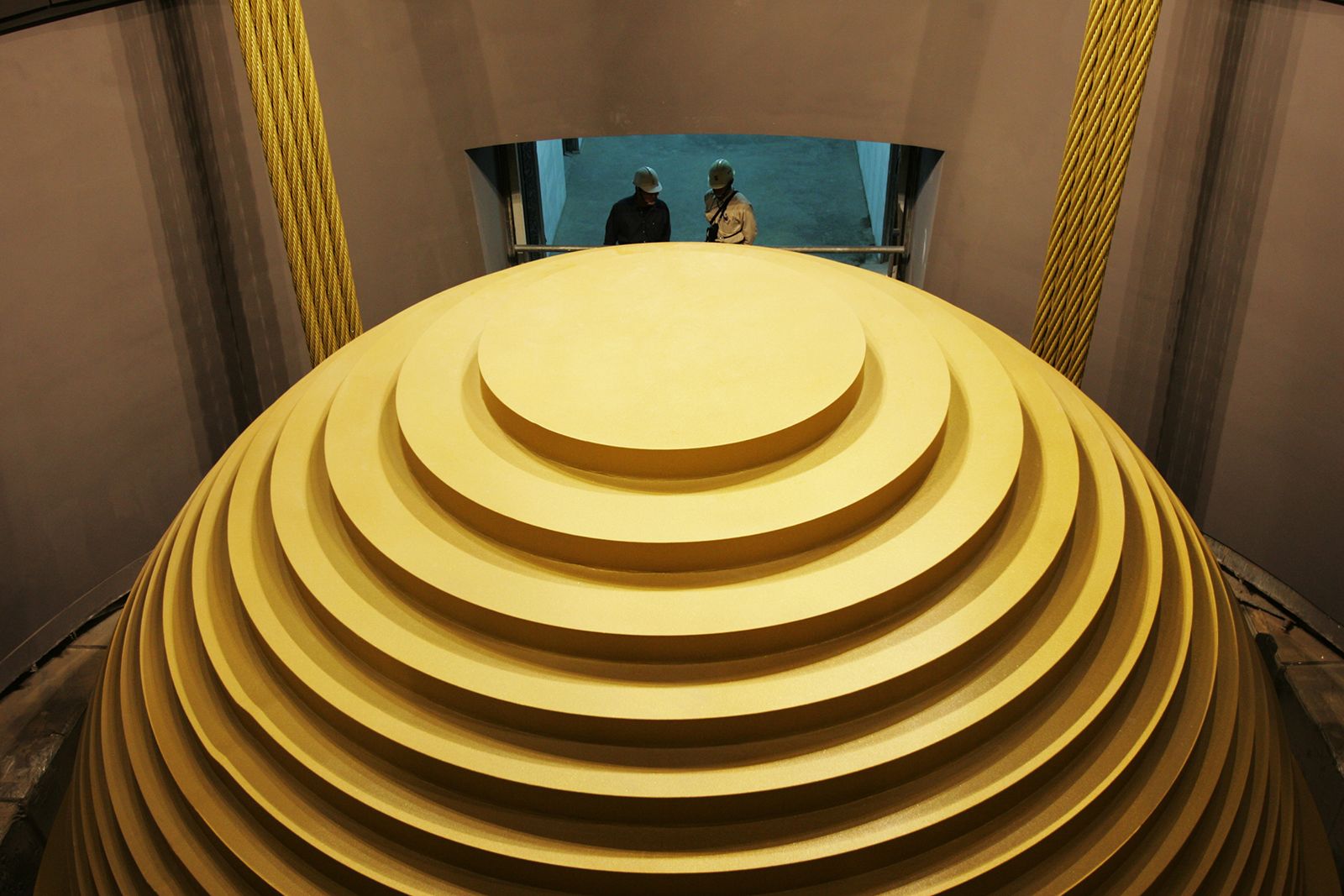How does Taipei 101, the tallest skyscraper in Taiwan, resist earthquakes?

(CNN) — A deadly 7.4-magnitude earthquake struck Taiwan on Wednesday, killing at least a dozen people and damaging 770 buildings, according to the latest estimates from the island's National Fire Agency (NFA).
In the capital Taipei, just 130 kilometers from the epicenter, buildings also shook violently during the quake. The strongest in Taiwan in 25 years But in a triumph of modern engineering, the towering Taipei 101, once the world's tallest skyscraper, emerged unscathed from the island's recent earthquake.
Images of the quake appear to show the 1,667-foot (about 500-meter) tower swaying slightly, as its structural flexibility helps withstand the strong movement of the quake. This move perfectly demonstrated how a skyscraper's most important defense against earthquakes is the same material it was built with: reinforced concrete.
By combining the compressive strength of concrete with the tensile strength of steel, the material makes the building flexible enough to sway, yet rigid enough to withstand the strong winds and typhoons that frequently hit Taiwan. (The principle that buildings can withstand seismic forces by moving with them, rather than against them, has for centuries underpinned traditional architecture in earthquake-prone East Asia, from Japanese temples to Chinese palaces.)
However, at the top of the tower, another technological innovation helps protect the 101-story skyscraper: a massive orb-shaped device known as a tuned mass damper.

A 660-ton spherical device called a tuned mass damper swings like a giant pendulum on the upper floors of the skyscraper. (Richard Chung TW/Reuters/File)
Giant counterweight
The golden steel ball, suspended by 92 thick cables between the 87th and 92nd floors, can move approximately 1.5 meters in any direction. As a result, it acts as a pendulum that resists (or “inhibits”) oscillatory movements.
“It's basically a very big counterweight,” Stefan Al, author of “Supertall: How the World's Tallest Buildings Are Reshaping Our Cities and Our Lives,” explained in a phone interview. “In the case of Taipei 101, it weighs 660 tons. It seems very heavy, but if you compare it to the total weight of the building, it is just a fraction,” he said.
“When the building starts to shake, the (tuned mass damper) moves in the opposite direction. In the case of Taipei 101, it is suspended… so it will stay back when the tower sways and absorb the kinetic energy moving in the opposite direction,” he said, explaining that the hydraulic cylinders on Between the ball and the building, this energy is converted into heat, which is then dispersed.
Tuned mass dampers are used in skyscrapers around the world, including the “ultra-thin” Steinway Tower in New York and the sail-shaped Burj Al Arab in Dubai, which has 11 towers. Al said the device crucially protects against violent movement caused by “harmonic vibration,” which can cause structural failure during an earthquake.
“(This is) when buildings start to vibrate with their own resonance,” he said, comparing the phenomenon to a tuning fork. “This can cause collapse, (as the building) will start to shake faster and faster.”
Tuned mass absorbers, also known as harmonic absorbers, are “tuned” so that they resonate at the same frequency as the building, but with wavelengths that start earlier or later, helping to dissipate potentially catastrophic energy.
The stability they provide can also reduce the uncomfortable effect that swaying can have on building occupants during high winds.
Structural support
Designed by Taiwanese firm CY Lee & Partners, Taipei 101 was the tallest building in the world from 2004 to 2007, when it was surpassed by Dubai's Burj Khalifa. The observation deck overlooking the innovative mass damper is now a popular attraction for visitors, especially when moved by strong winds.
However, the giant ball is not the only design feature helping to stabilize the tower, which is located near a main fault line.
For one thing, the skyscraper rests on exceptionally deep foundations, which means 380 steel and reinforced concrete piers are dug into the foundation below. Above them, the core of the building is connected to a series of “monumental columns”, which are located around its perimeter, through massive steel beams.
The skyscraper meets the stringent seismic building codes you'd expect on an island located along the “Pacific Ring of Fire,” which runs around the Pacific Rim and causes massive seismic and volcanic activity from Indonesia to Chile.
But while the design has also undergone extensive digital modeling and “shaking table” testing (where scale models are tested on a device that replicates the motion of an earthquake), it is not yet known how a building like this would react. In the face of a stronger or somewhat closer seismic event, theoretically.
“Even though we have computer simulations, there's still something about physics that we can't get from numerical simulations,” Al said. Tables. Vibrations”.

“Bacon advocate. Certified creator. Twitteraholic. Tv junkie. Beer fanatic. Internet nerd. Passionate thinker. Reader.”




:quality(85)/cloudfront-us-east-1.images.arcpublishing.com/infobae/OF4NJDPGLBEYJAZ5XZMH3OIPJ4.jpg)



